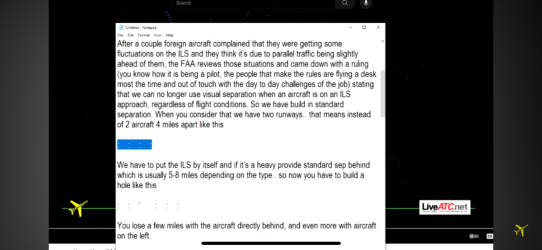jb747
Enthusiast
- Joined
- Mar 9, 2010
- Posts
- 13,508
We need to separate something here. The issue isn't a visual approach as such, and I'll bet that what we consider a visual approach wasn't actually what ATC were clearing people to do. The problem is asking people to maintain separation visually at night, over a large city. There is no way to really tell if the aircraft you're looking at is the one you're supposed to be spacing on. They disappear against the lights of the city. I wonder how the controller would react if you told him you'd lost contact with the other aircraft. Basically it's a system that dumps separation onto the aircraft, in a situation in which they have quite limited ability to safely monitor it.
The Captain can do whatever he needs to do to ensure the safety of the aircraft. To be honest, diverting away from such poor ATC probably improves things.
This is a quote from the FAA rules for a visual approach:
"Proceed as otherwise instructed by ATC. The pilot is expected to comply with assigned instructions, and responsible to maintain terrain and obstruction avoidance until reaching an ATC assigned altitude. ATC is responsible to provide instructions to the pilot to facilitate a climb to the minimum altitude for instrument operations. ATC must provide approved separation or visual separation from other IFR aircraft."
Basically they were trying to forcibly offload the last part!
The Captain can do whatever he needs to do to ensure the safety of the aircraft. To be honest, diverting away from such poor ATC probably improves things.
This is a quote from the FAA rules for a visual approach:
"Proceed as otherwise instructed by ATC. The pilot is expected to comply with assigned instructions, and responsible to maintain terrain and obstruction avoidance until reaching an ATC assigned altitude. ATC is responsible to provide instructions to the pilot to facilitate a climb to the minimum altitude for instrument operations. ATC must provide approved separation or visual separation from other IFR aircraft."
Basically they were trying to forcibly offload the last part!
Last edited:















